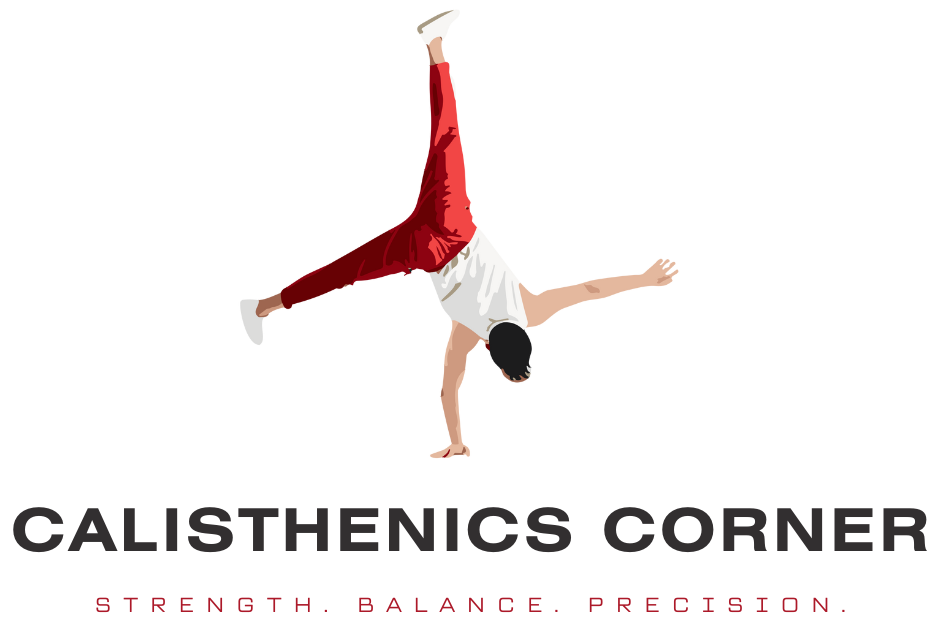In this article, you will discover effective techniques for training your back using calisthenics. Calisthenics, a form of exercise that relies on bodyweight movements, offers a unique and challenging approach to strengthening and toning your back muscles. By utilizing a variety of exercises such as pull-ups, rows, and bridges, you can target different areas of your back and achieve impressive results. Whether you are a beginner or an experienced fitness enthusiast, this article will provide you with valuable tips and guidance to enhance your back training routine with calisthenics.
Warm-up Exercises
Dynamic warm-up exercises
Before diving into your back training with calisthenics, it’s crucial to warm up your body to prevent injury and optimize performance. Dynamic warm-up exercises help to increase blood flow, activate your muscles, and enhance mobility. Some effective dynamic warm-up exercises to prepare your back for a workout include arm circles, torso twists, cat-cow stretches, and trunk rotations. These exercises warm up your entire body, including your back, and help to loosen up any tight muscles.
Mobility exercises
To ensure proper range of motion and mobility in your back before starting your training, incorporate some mobility exercises into your warm-up routine. These exercises aim to improve flexibility, reduce muscle tightness, and increase joint mobility. A few examples of mobility exercises that specifically target the back are spinal rotations, cat-camel stretches, and thoracic extensions. By performing these exercises, you’ll enhance the mobility of your back muscles and ensure that they are primed for the upcoming workout.
Horizontal Pulling Exercises
Pull-ups
Pull-ups are one of the most effective and challenging back exercises you can do using only your body weight. They primarily target the muscles in your back, including the latissimus dorsi, rhomboids, and trapezius. To perform a pull-up, hang from a pull-up bar with an overhand grip, slightly wider than shoulder-width apart. Engage your back muscles and pull your body up until your chin reaches the bar, then slowly lower yourself back down to the starting position. Aim to gradually increase the number of repetitions or add weight to make the exercise more challenging.
Australian pull-ups
Australian pull-ups, also known as body rows or inverted rows, are another excellent calisthenics exercise for the back. These target similar muscles as regular pull-ups but provide a different range of motion, making them a great variation. To perform an Australian pull-up, set up a bar at waist height or use a suspension trainer. Grab the bar or handles with an overhand grip and position yourself underneath, keeping your body straight and your feet hip-width apart. Engage your back muscles and pull your chest up towards the bar, then slowly lower yourself back down. Adjust the difficulty by changing the angle or adding weight.
Inverted rows
Inverted rows are a challenging bodyweight exercise that engages the entire back. They primarily target the muscles in the upper back, including the rhomboids, trapezius, and rear deltoids. To perform an inverted row, set up a bar at waist height or use a suspension trainer. Grab the bar or handles with an overhand grip, keeping your body straight and your feet hip-width apart. Walk your feet forward, leaning back until you’re in a reclined position, and your arms are fully extended. Engage your back muscles and pull your chest up towards the bar, then slowly lower yourself back down. Adjust the difficulty by changing the angle or adding weight.
Bodyweight rows
Bodyweight rows, also known as horizontal rows or supine rows, are an effective calisthenics exercise for targeting the muscles in your back. They require minimal equipment and can be done using a bar or any sturdy horizontal surface. To perform bodyweight rows, position yourself underneath the bar or surface and grab it with an overhand grip. Walk your feet forward until you’re at an angle where your body is fully extended and your arms are straight. Engage your back muscles and pull your chest up towards the bar, then slowly lower yourself back down. You can adjust the difficulty by changing the angle or adding weight.
Vertical Pulling Exercises
Chin-ups
Chin-ups are similar to pull-ups but with an underhand grip, targeting slightly different muscles in your back. While pull-ups engage the muscles more in the upper back and shoulders, chin-ups specifically target the muscles in the middle and lower back. To perform a chin-up, hang from a pull-up bar with an underhand grip, slightly narrower than shoulder-width apart. Engage your back muscles and pull your body up until your chin clears the bar, then slowly lower yourself back down.
Commando pull-ups
Commando pull-ups are a challenging variation of the standard pull-up that targets the back muscles differently. They place more emphasis on the muscles in the inner and outer parts of the back, specifically the latissimus dorsi and biceps. To perform a commando pull-up, start by gripping the pull-up bar with one hand in an overhand grip and the other hand in an underhand grip, with the underhand grip closer to your face. Engage your back muscles and pull your body up towards the hand with the overhand grip, then switch hand positions and repeat.
L-sit pull-ups
L-sit pull-ups not only target your back muscles but also engage your core and upper body strength. They require more stabilization and control, making them a challenging exercise. To perform an L-sit pull-up, start by sitting on the ground with your legs extended in front of you, forming an L shape with your body. Place your hands on a pull-up bar with an overhand grip slightly wider than shoulder-width apart. Lift your legs off the ground and engage your back muscles as you pull your body up until your chin reaches the bar, then slowly lower yourself back down.
Muscle-ups
Muscle-ups are an advanced calisthenics exercise that combines a pull-up with a dip, targeting multiple muscle groups including the back, shoulders, arms, and chest. They require a high level of strength and coordination. To perform a muscle-up, start by hanging from a pull-up bar with an overhand grip, slightly wider than shoulder-width apart. Engage your back muscles and perform a pull-up, then immediately transition into a dip, pushing your body up until your arms are fully extended. Slowly lower yourself back down, reversing the movements to return to the starting position. Muscle-ups can be challenging, so it’s recommended to gradually work your way up to them using progressions and building strength.
Isometric Hold Exercises
Front lever holds
Front lever holds are an advanced isometric exercise that targets the muscles in your back, specifically the latissimus dorsi, lower back, and core. They require a high level of strength, stability, and body control. To perform a front lever hold, start by hanging from a bar with an overhand grip, slightly wider than shoulder-width apart. Engage your back muscles and slowly lift your legs, keeping them straight, until your body is parallel to the ground. Hold this position for as long as you can, focusing on maintaining proper form and engaging your back muscles.
Back lever holds
Back lever holds are another challenging isometric exercise that targets the muscles in your back, primarily the latissimus dorsi, rhomboids, and rear deltoids. Like the front lever holds, back lever holds require strength, stability, and body control. To perform a back lever hold, start by hanging from a bar with an overhand grip, slightly wider than shoulder-width apart. Engage your back muscles and slowly lower your legs, bending at the knees until your body is parallel to the ground, with your back facing upwards. Hold this position for as long as you can, focusing on maintaining proper form and engaging your back muscles.
Core Strengthening Exercises
Hanging leg raises
Hanging leg raises are an excellent core strengthening exercise that also engages the muscles in your back. They primarily target the lower abs, hip flexors, and obliques. To perform hanging leg raises, hang from a bar with an overhand grip, slightly wider than shoulder-width apart. Engage your core and lift your legs, bending at the hips, until they are parallel to the ground. Slowly lower your legs back down to the starting position, maintaining control throughout the movement. For an added challenge, you can also perform hanging leg raises with a knee tuck or straight leg variation.
Toes-to-bar
Toes-to-bar exercise is another effective core and back workout that requires hanging from a bar. It targets the lower abs, hip flexors, and upper back muscles. To perform toes-to-bar, hang from a bar with an overhand grip, slightly wider than shoulder-width apart. Engage your core and bring your toes up towards the bar, lifting your legs as high as possible. Control the movement as you slowly lower your legs back down to the starting position. Focus on engaging your back muscles and maintaining proper form throughout the exercise.
Windshield wipers
Windshield wipers are a challenging core exercise that engages the muscles in your back, especially the obliques and lower back. To perform windshield wipers, hang from a bar with an overhand grip, slightly wider than shoulder-width apart. Engage your core and lift your legs, bending at the hips, until they are parallel to the ground. While maintaining control, slowly rotate your legs from side to side, mimicking the motion of windshield wipers. Focus on engaging your back muscles to control the movement and avoid swinging.
Supplementary Exercises
Supermans
Supermans are an effective supplementary exercise for strengthening the muscles in your back, including the erector spinae, glutes, and posterior shoulders. To perform supermans, lie face down on the ground with your arms extended in front of you and your legs straight. Simultaneously lift your arms, chest, and legs off the ground while engaging your back muscles. Hold the lifted position for a few seconds, then slowly lower yourself back down. Repeat the movement for several repetitions, focusing on squeezing your back muscles during the lift.
Deadlifts
While not strictly a calisthenics exercise, deadlifts are a highly effective compound movement that targets the muscles in your back, including the erector spinae, latissimus dorsi, and rhomboids. To perform a deadlift, stand with your feet shoulder-width apart, gripping a barbell with an overhand grip, slightly wider than shoulder-width apart. Engage your back muscles and lift the barbell by driving through your heels, maintaining a flat back and a neutral spine. Extend your hips fully as you stand up and then slowly lower the barbell back down to the starting position.
Reverse hypers
Reverse hypers are a great supplementary exercise that targets the muscles in your lower back, glutes, and hamstrings. They can be performed using specialized equipment or by lying on a stability ball or bench. To perform reverse hypers, lie face down on the equipment with your hips at the edge and your legs hanging off. Engage your back muscles and lift your legs up towards the ceiling, squeezing your glutes at the top of the movement. Slowly lower your legs back down and repeat for several repetitions, focusing on contracting your back muscles during the lift.
One-arm rows
One-arm rows are a supplementary exercise that targets the muscles in your upper back, including the latissimus dorsi and rhomboids. They can be done with a dumbbell or any weighted object. To perform one-arm rows, place one hand and knee on a stable bench or surface, with your back flat and parallel to the ground. Hold the weight with your free hand, hanging towards the ground, then engage your back muscles and pull the weight towards your side, squeezing your back muscles at the top of the movement. Slowly lower the weight back down and repeat for several repetitions, then switch sides.

Programming Tips
Progressive overload principle
When training your back with calisthenics, it’s important to follow the progressive overload principle. This principle involves progressively increasing the stress placed on your muscles over time to continually challenge them and promote growth. You can achieve progressive overload by gradually increasing the number of repetitions, sets, or difficulty of the exercises. You can also add weight, adjust the angle, or incorporate more challenging variations of the exercises. Consistently challenging your back muscles with progressive overload will lead to improvements in strength, size, and overall back development.
Training frequency
The frequency of your back training sessions will depend on your fitness level, goals, and overall training program. For beginners or those who are new to calisthenics, it’s generally recommended to train your back muscles at least twice a week with a day of rest in between sessions. This frequency allows for adequate recovery and muscle growth. As you progress and become more advanced, you can increase the frequency to three or four times a week, providing you with more opportunities to stimulate back muscle growth and development. However, always listen to your body and adjust the frequency accordingly.
Rest and recovery
Rest and recovery are crucial components of any training program, including calisthenics. Giving your muscles time to recover and repair is essential for optimal growth and to prevent overuse injuries. Make sure to include rest days in your training schedule, allowing your back muscles to recover and adapt to the training stimulus. Pay attention to your body’s signals and take rest days when needed. Additionally, prioritize quality sleep, proper nutrition, and hydration to support your back training efforts and overall health. Taking care of your body will improve your performance and help you achieve your back training goals.
Proper Form and Technique
Engaging the back muscles
When performing back exercises with calisthenics, it’s crucial to focus on engaging the back muscles to maximize their activation and effectiveness. Throughout each exercise, consciously think about squeezing your back muscles as you perform the movement. Visualize pulling with your back muscles rather than relying on other muscle groups to do the work. This mind-muscle connection will ensure that you’re targeting the right muscles and will enhance the effectiveness of each exercise.
Maintaining proper alignment
Proper alignment is essential for executing back exercises with optimal form and preventing injuries. Pay attention to your posture and maintain a neutral spine throughout each exercise. Avoid rounding your shoulders or excessively arching your back. Keep your shoulders pulled back and down, chest open, and core engaged. This alignment will ensure that your back muscles are properly engaged and that the stress is evenly distributed throughout your back and other supporting muscles.
Breathing techniques
Proper breathing techniques can significantly impact the effectiveness and safety of your back exercises. Generally, exhale during the exertion phase or when you perform the hardest part of the exercise. This exhalation helps to engage your core and stabilize your body, allowing for greater power and control during the movement. Inhale during the eccentric or lowering phase to provide your muscles with oxygen and prepare for the next repetition. Remember to breathe naturally and avoid holding your breath, as it can increase your blood pressure and hinder your performance.
Common Mistakes to Avoid
Using momentum instead of muscle strength
One common mistake when training the back with calisthenics is relying on momentum rather than muscle strength. It’s important to perform each exercise with control and avoid using momentum to swing your body. Swinging not only reduces the effectiveness of the exercise but also increases the risk of injury. Focus on engaging the appropriate back muscles and perform each repetition with a slow, controlled movement, ensuring that you’re utilizing your back muscles to their full potential.
Neglecting proper warm-up
Warm-up exercises are often overlooked or skipped altogether, but they are essential for preparing your body for the demands of back training. Neglecting a proper warm-up can increase the risk of muscle strains, pulls, or other injuries. Take the time to perform dynamic warm-up exercises, such as arm circles, torso twists, and trunk rotations, to increase blood flow and activate your back muscles. Incorporate mobility exercises, like spinal rotations and cat-camel stretches, to improve range of motion and prevent muscle tightness. A thorough warm-up is a crucial first step to a safe and effective back training session.
Lacking variety in exercises
Another common mistake is sticking to the same exercises and not incorporating enough variety into your back training routine. While consistency is important for progress, your muscles can adapt and plateau if you don’t challenge them with different stimuli. To continue making gains in strength and muscle development, regularly vary your exercises, angles, grips, and difficulty levels. Introduce new exercises and progressions to keep your back training routine fresh and effective. This variety will stimulate different muscles and prevent you from reaching a training plateau.
Conclusion
Training your back with calisthenics is an effective way to strengthen and develop the muscles in your back, improve posture, and enhance overall fitness. By incorporating dynamic warm-up exercises and mobility work, you’ll prepare your body for the demands of back training. Horizontal and vertical pulling exercises, isometric holds, core strengthening exercises, and supplementary exercises provide a comprehensive approach to target the different muscles in your back. Following programming tips, maintaining proper form and technique, and avoiding common mistakes will ensure your back training is safe, effective, and enjoyable. Remember to listen to your body, prioritize rest and recovery, and gradually increase the intensity to continually challenge and improve your back muscles. With consistency and dedication, you’ll achieve a strong and well-developed back through calisthenics.








